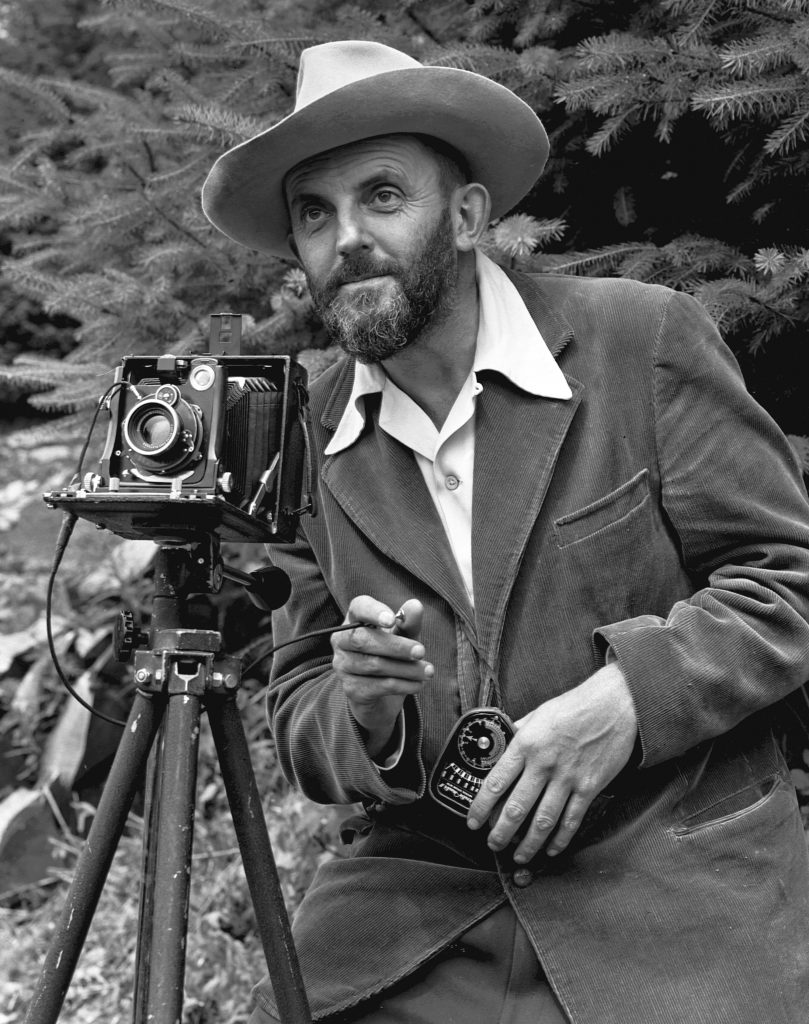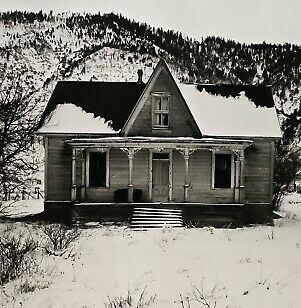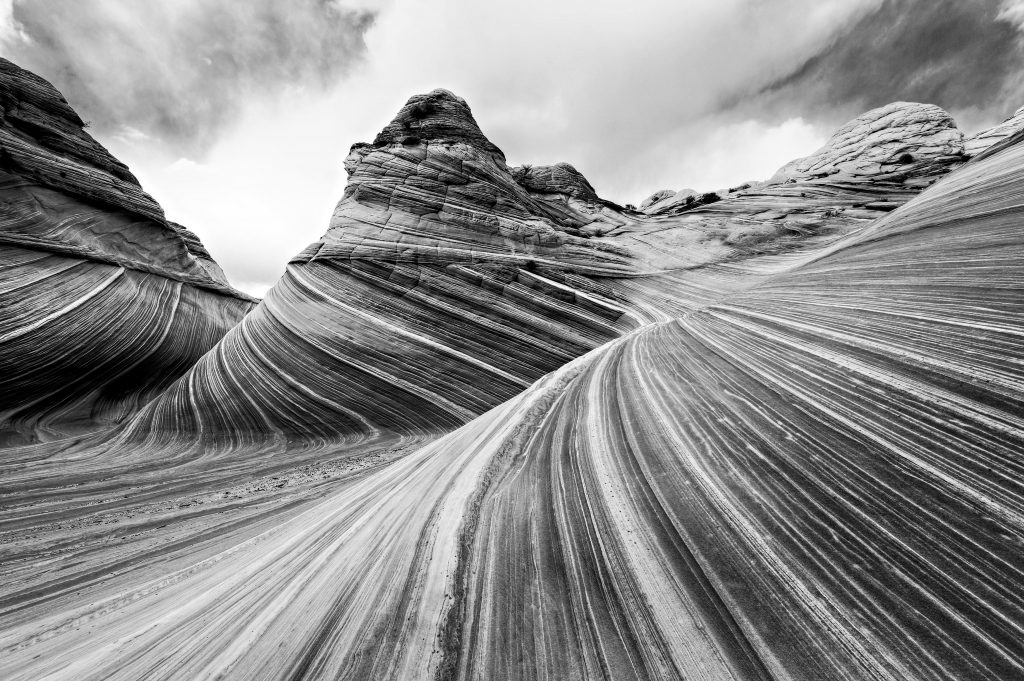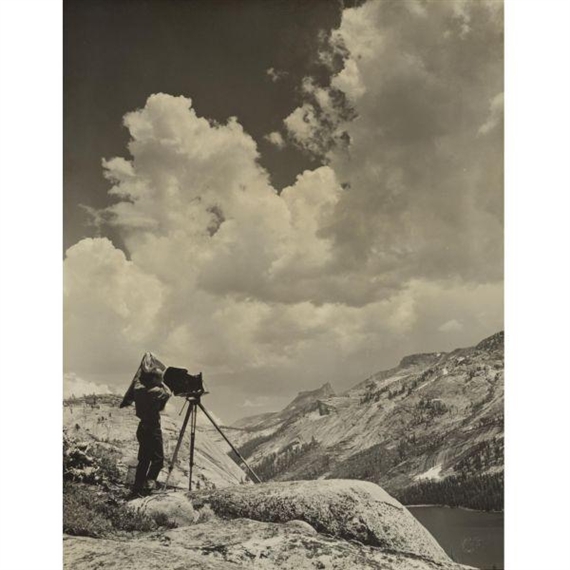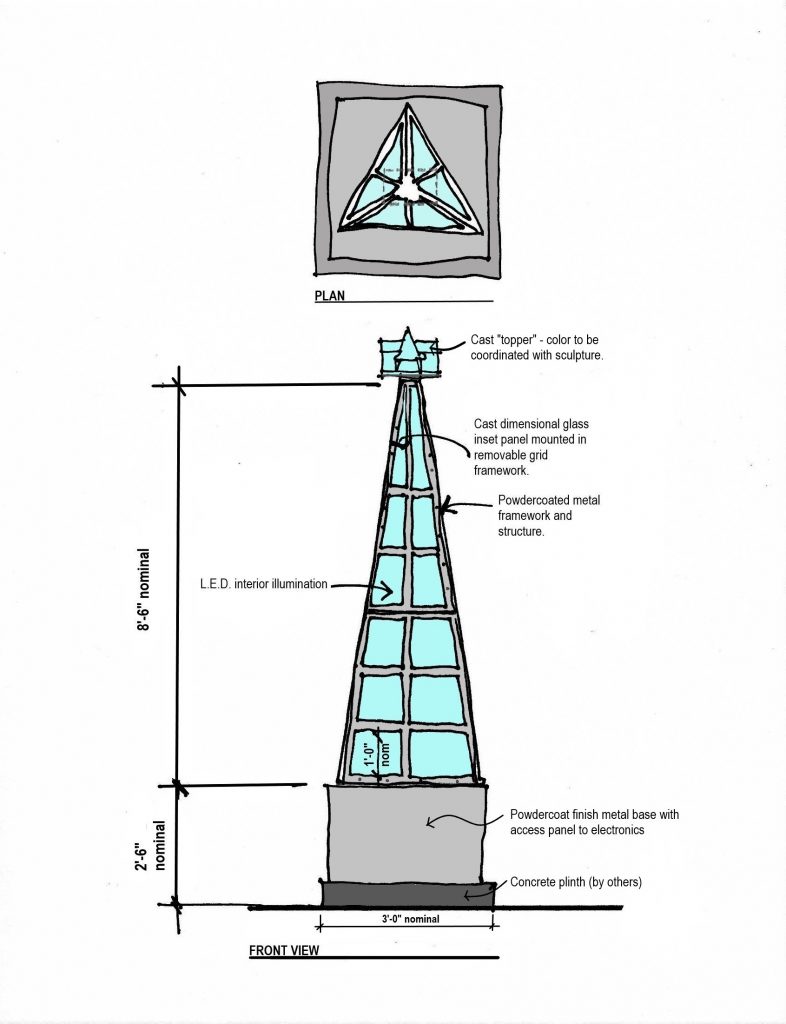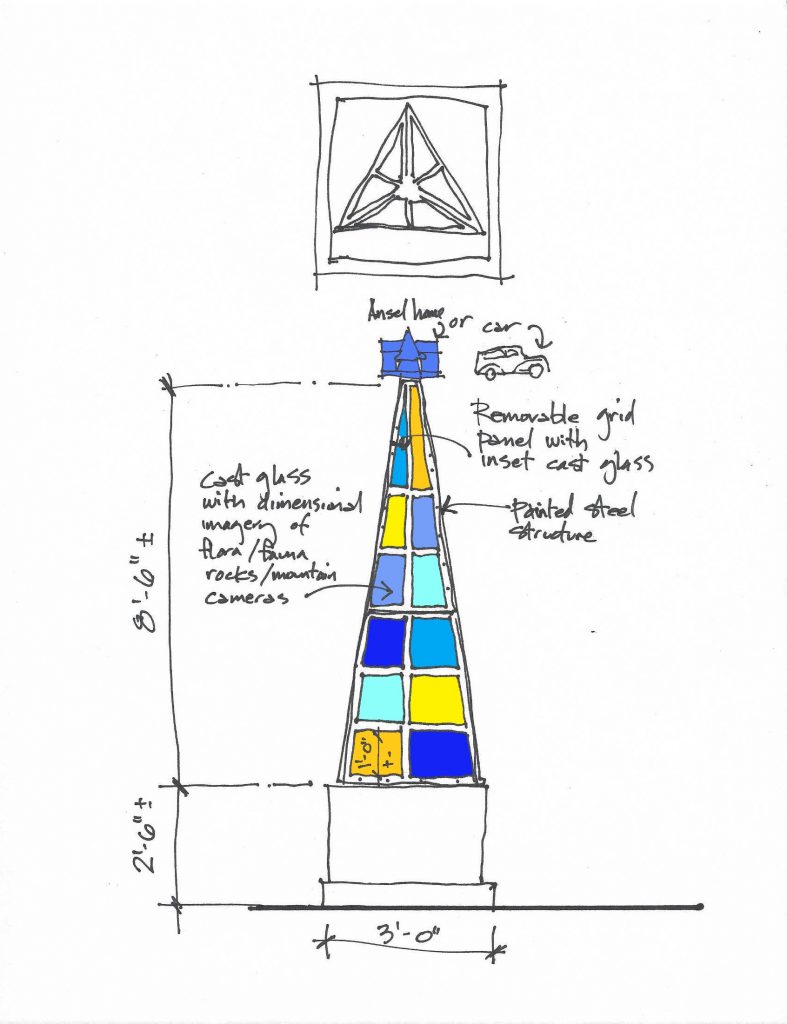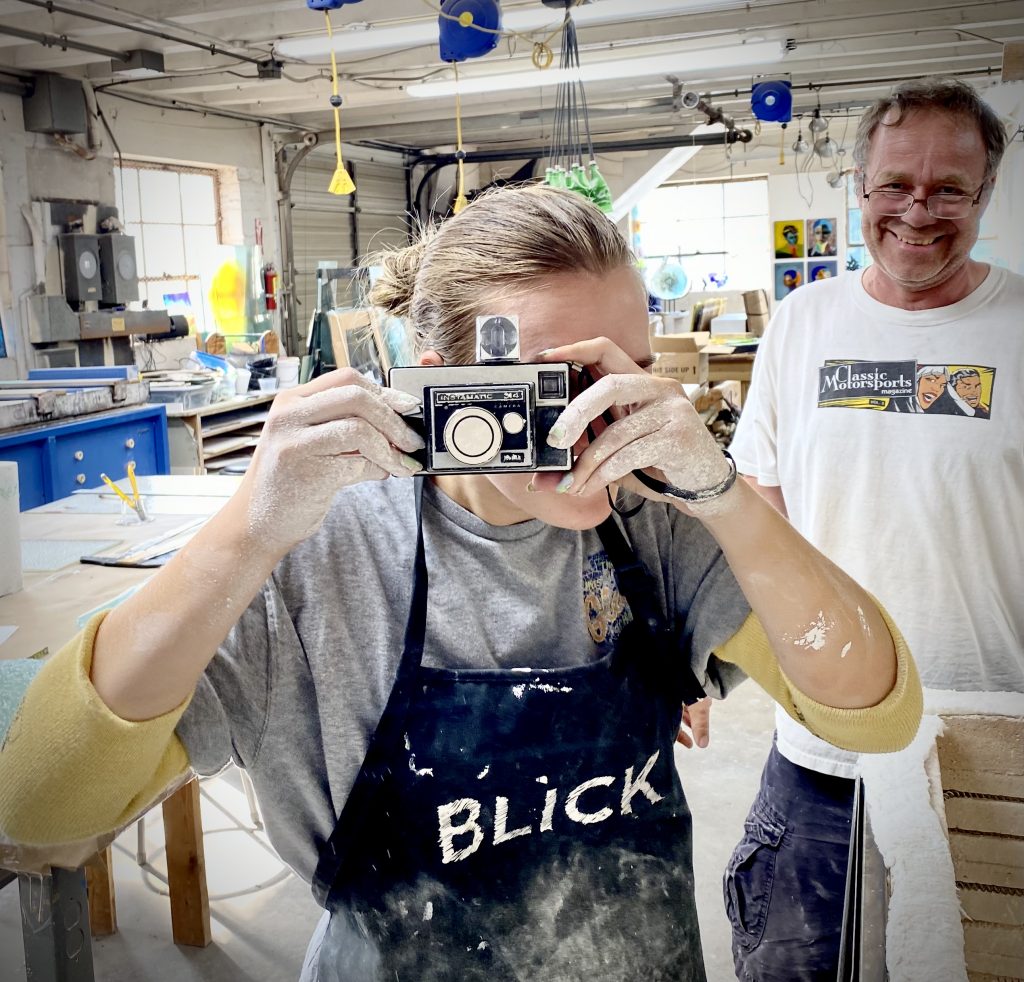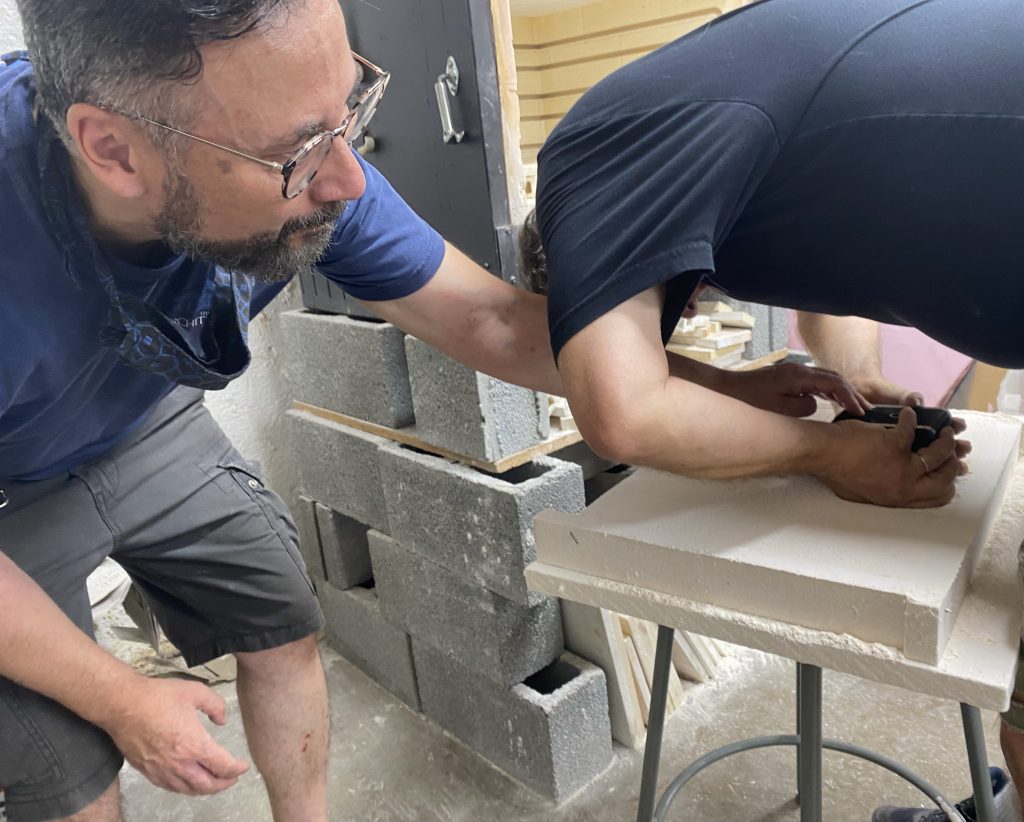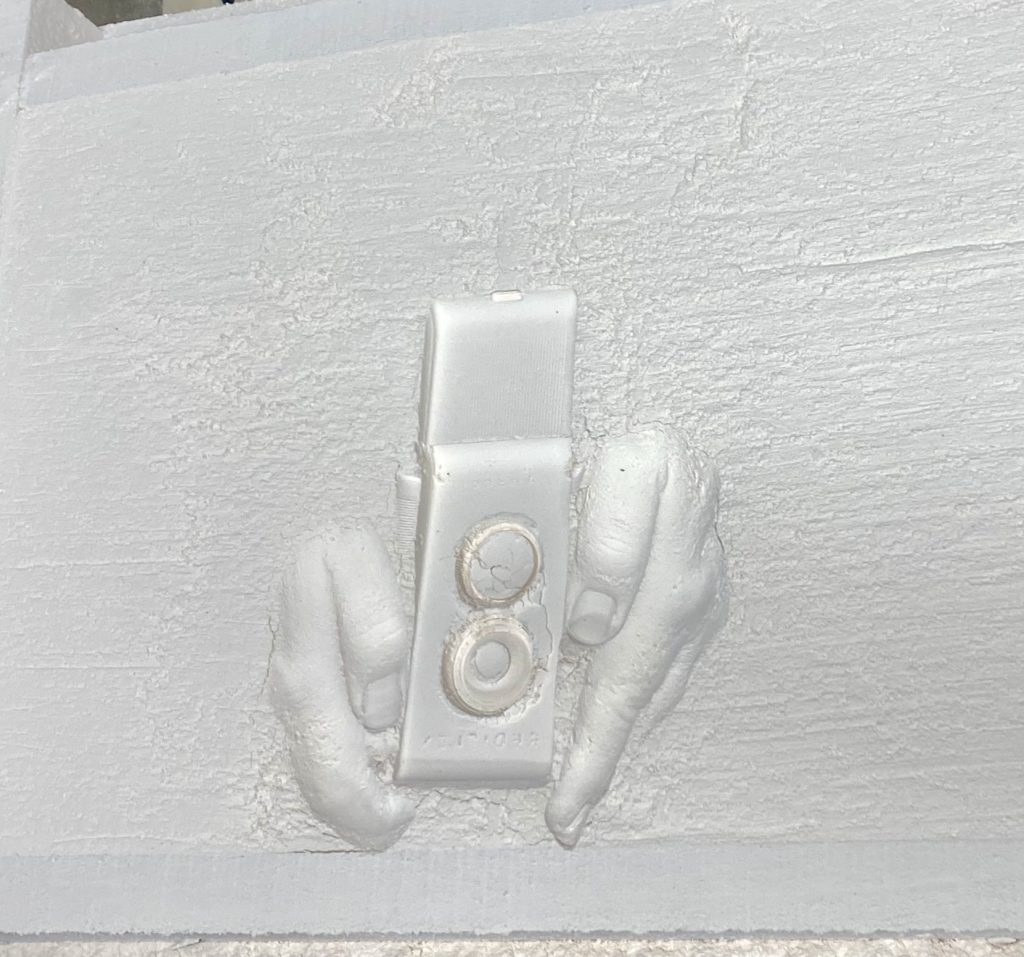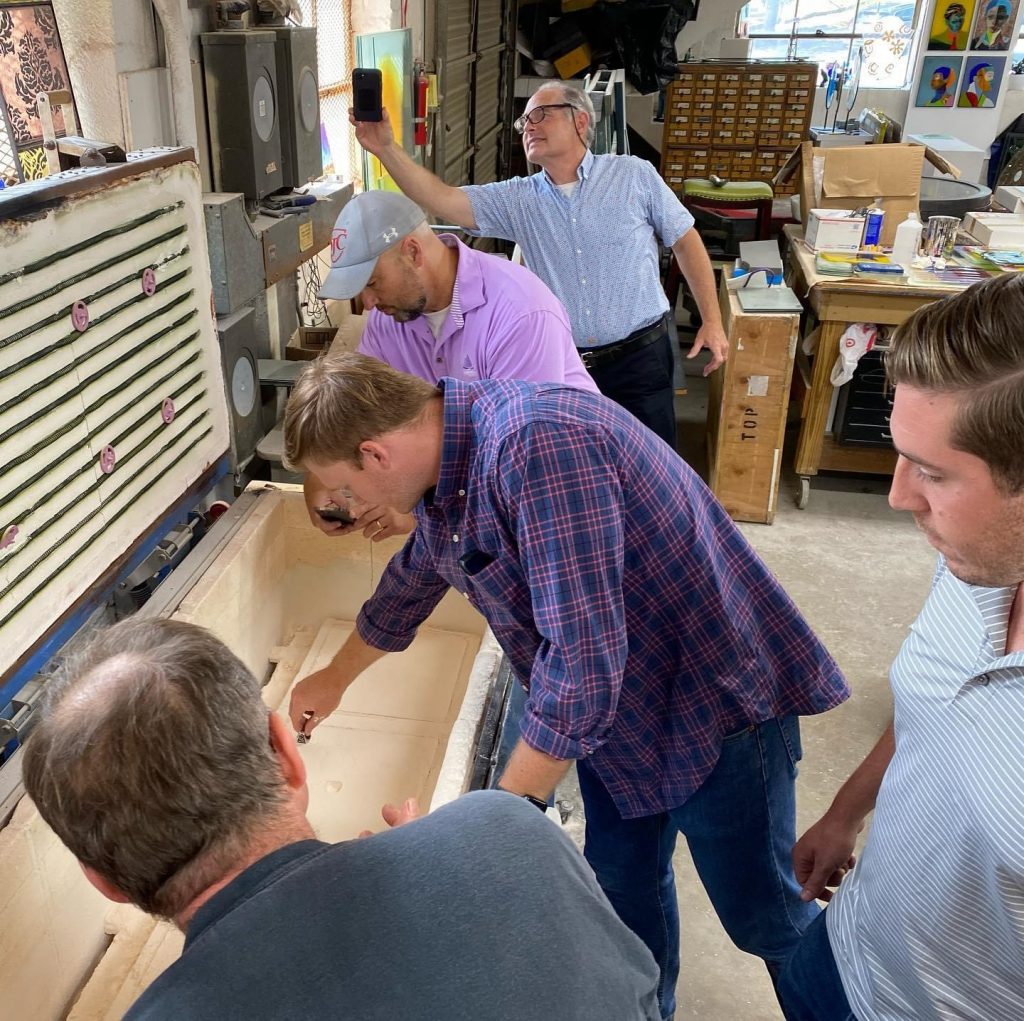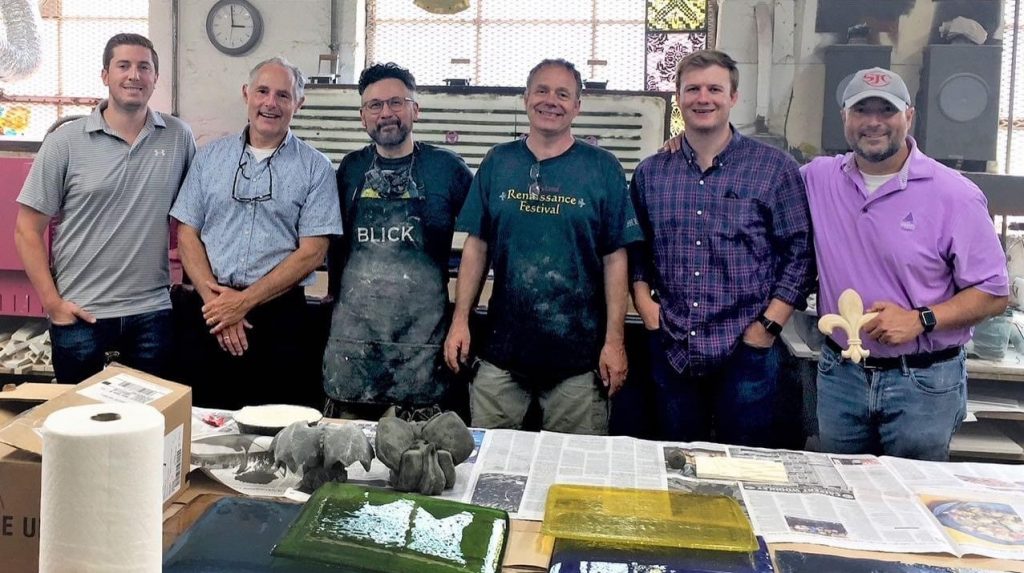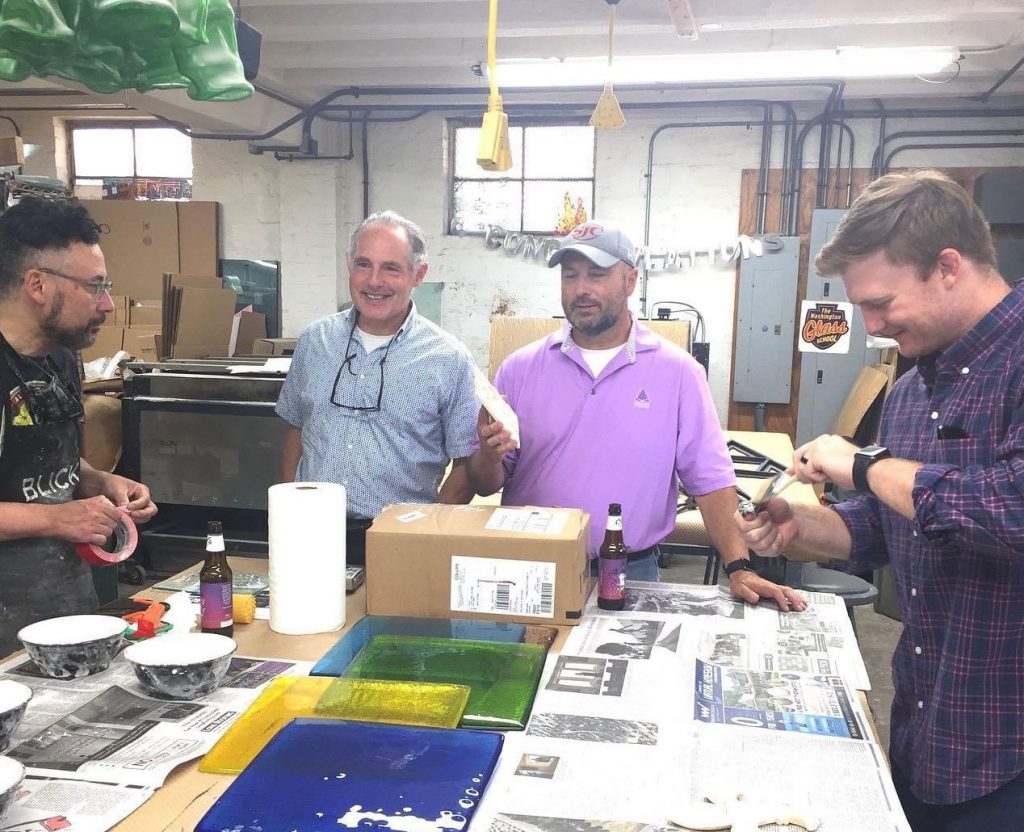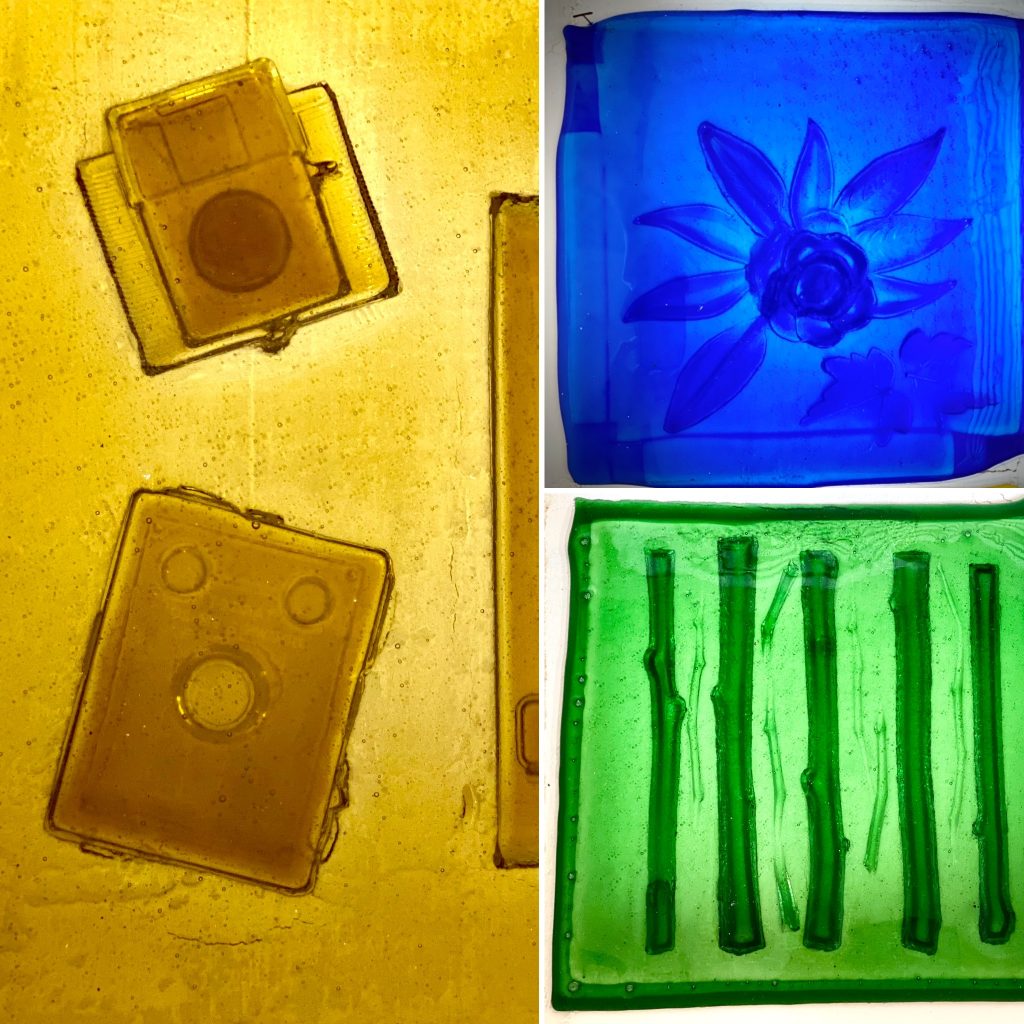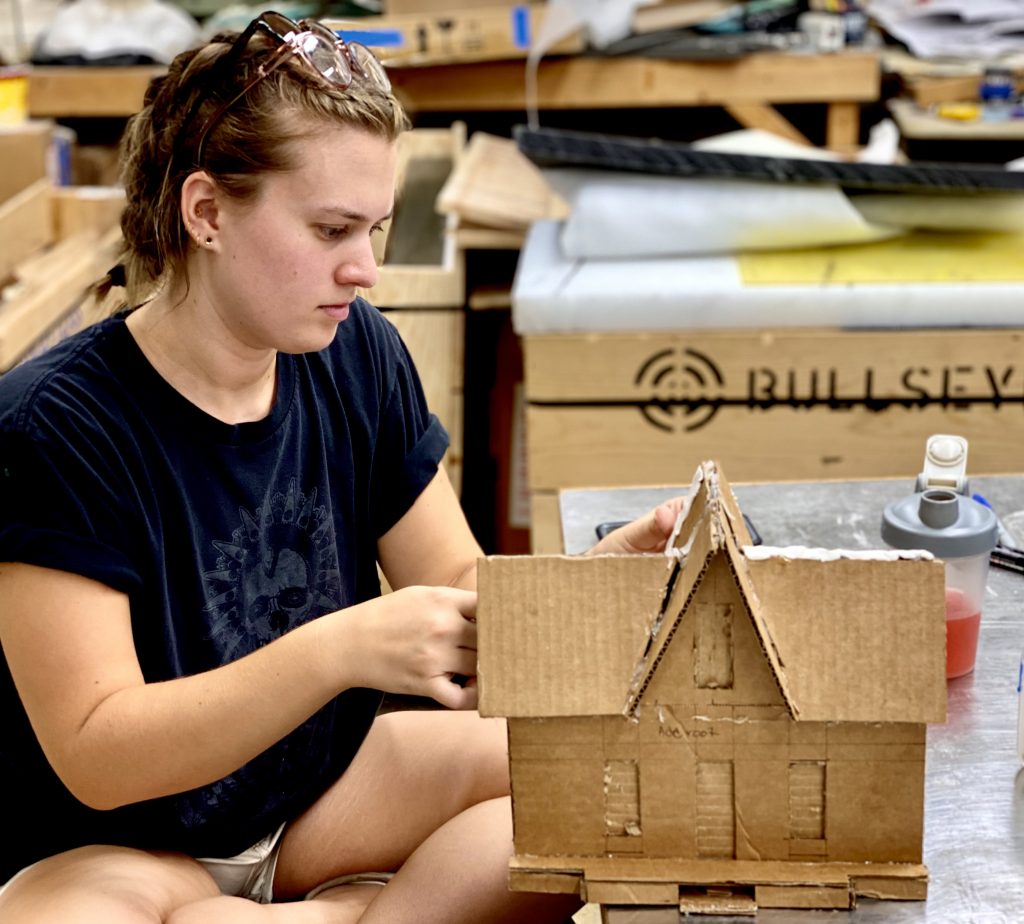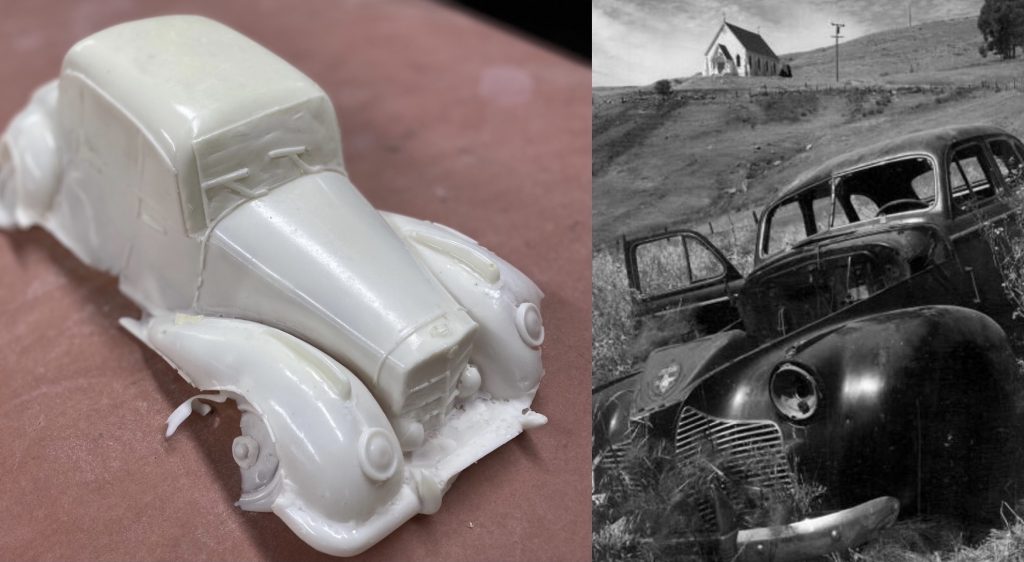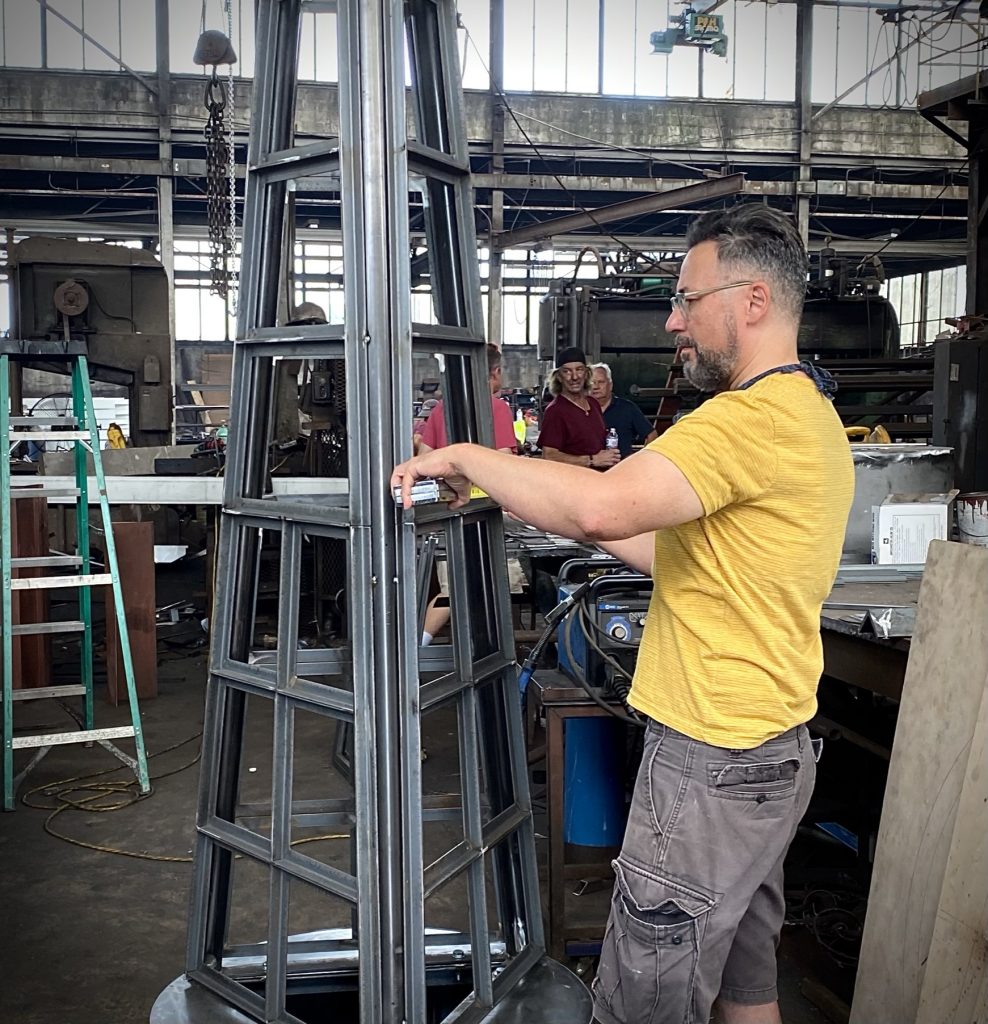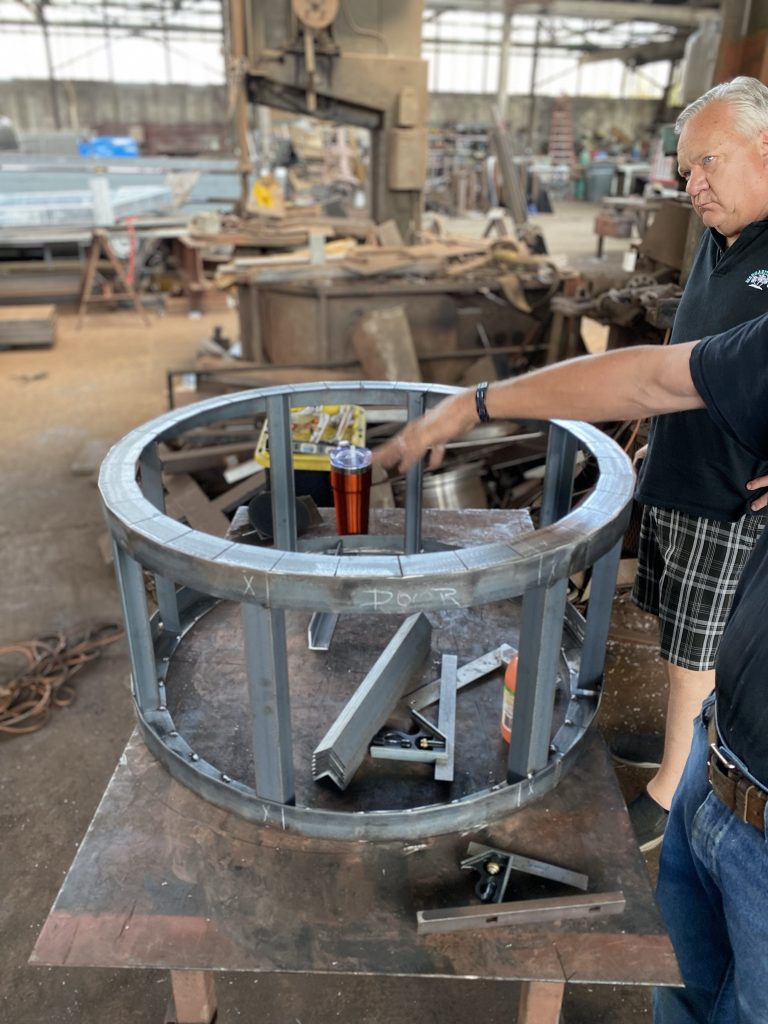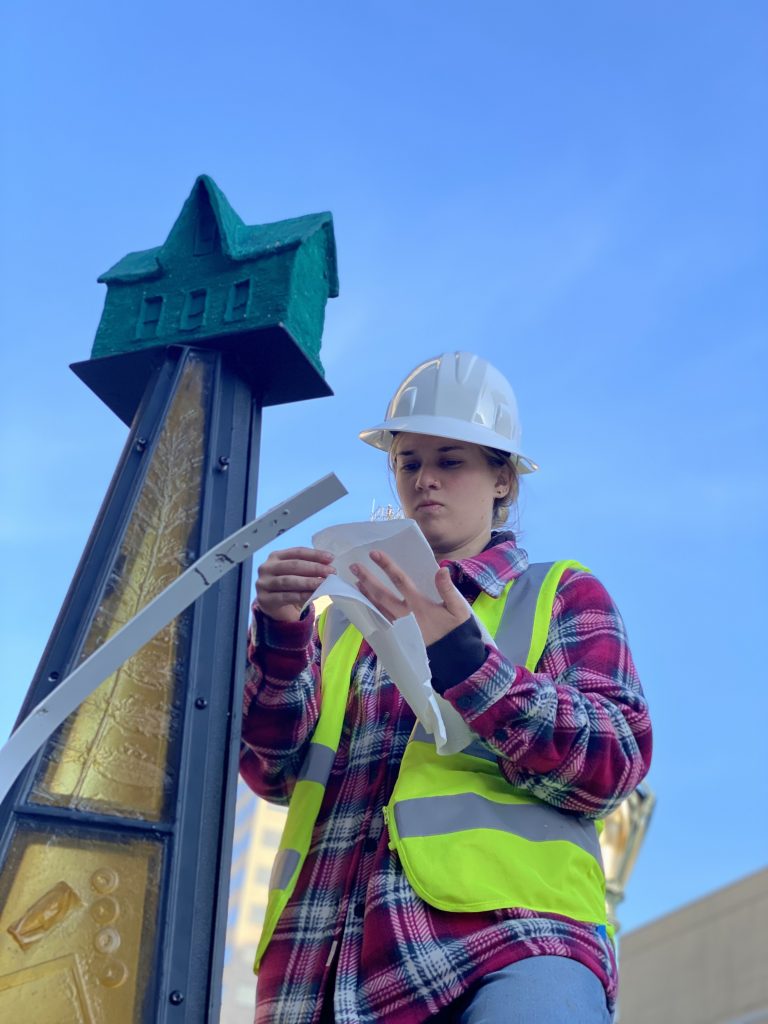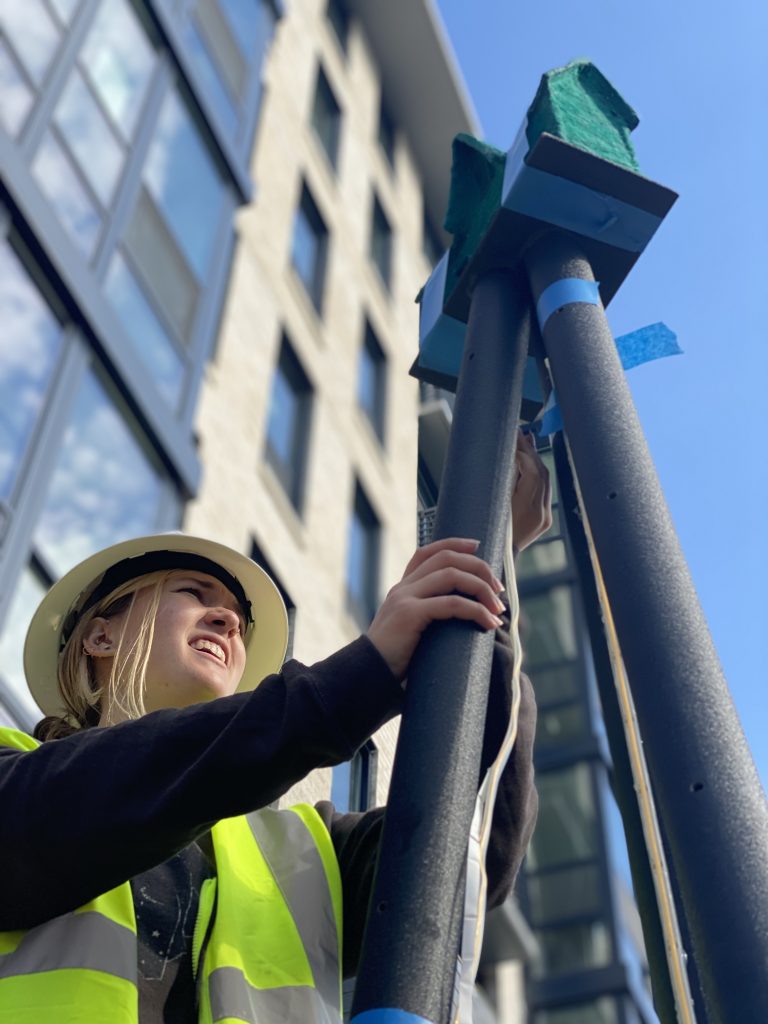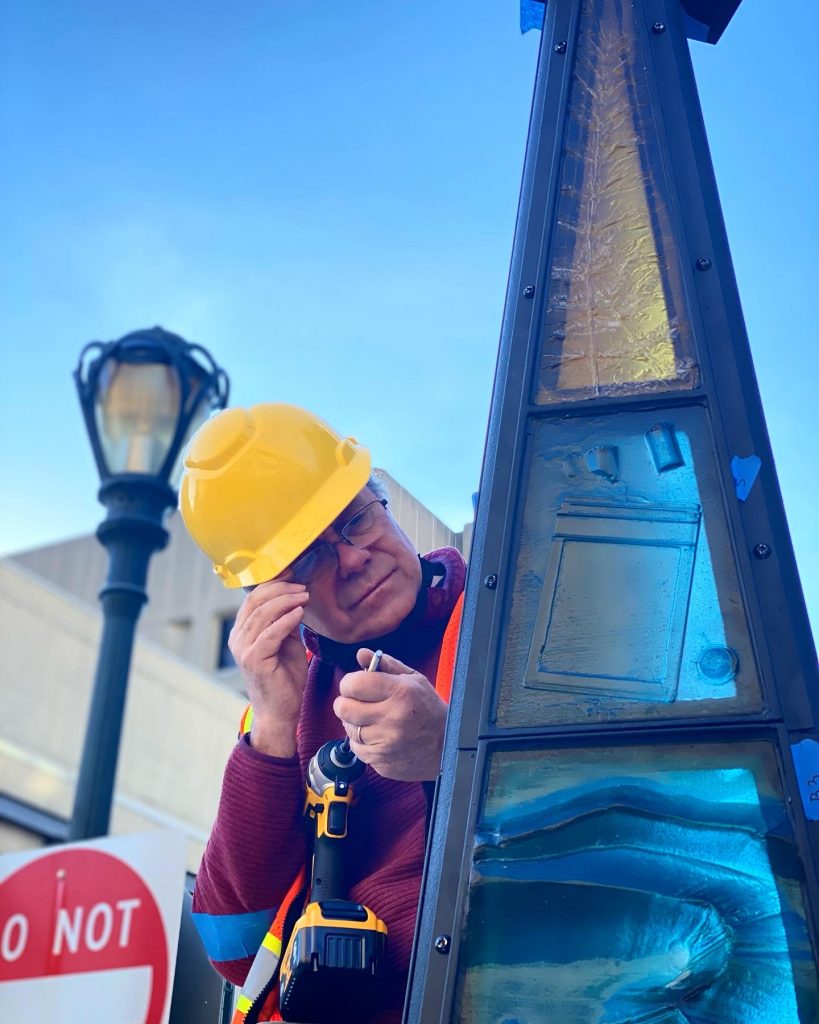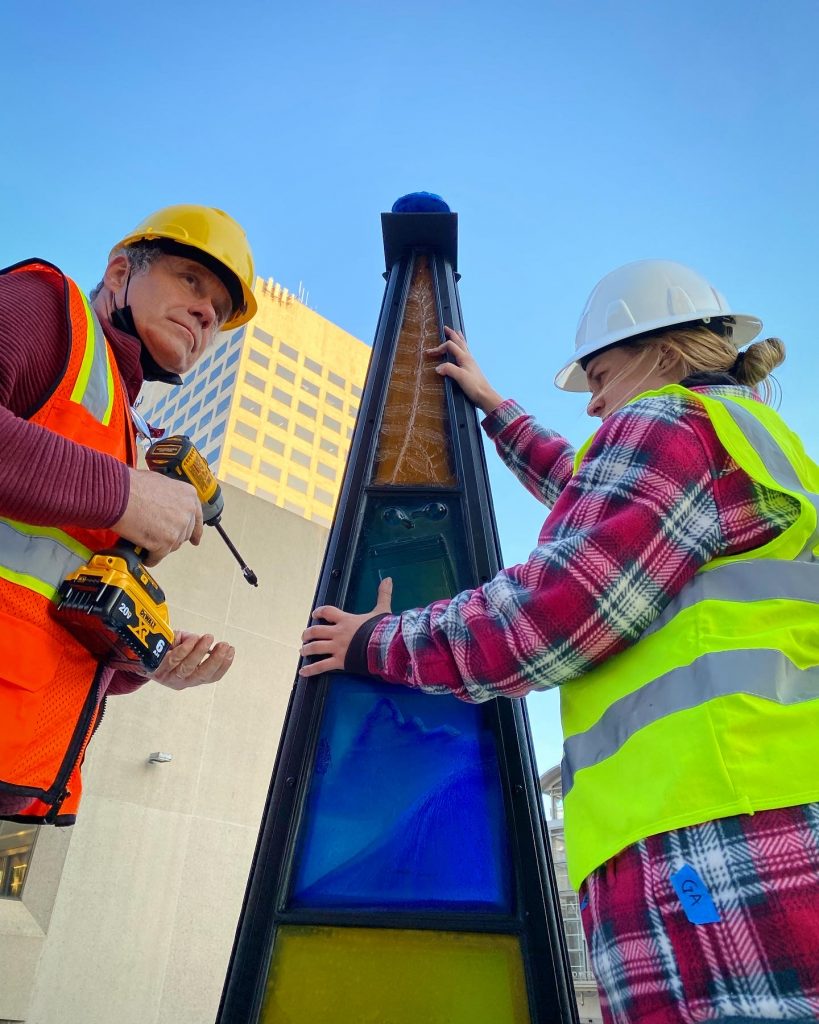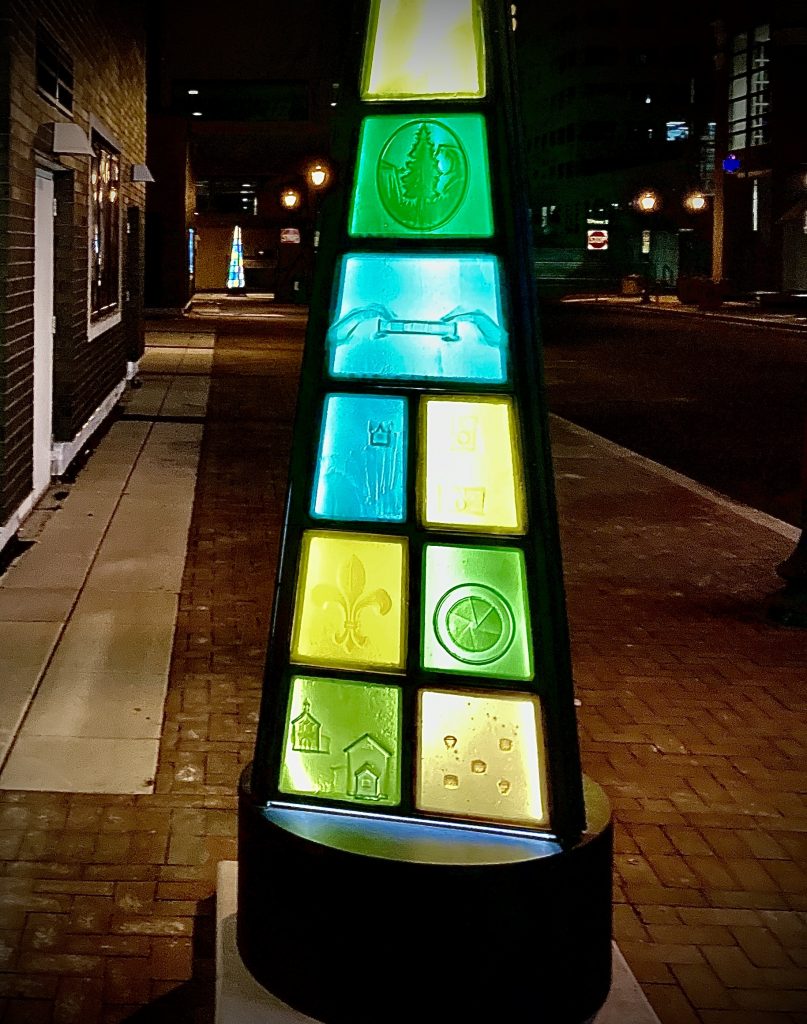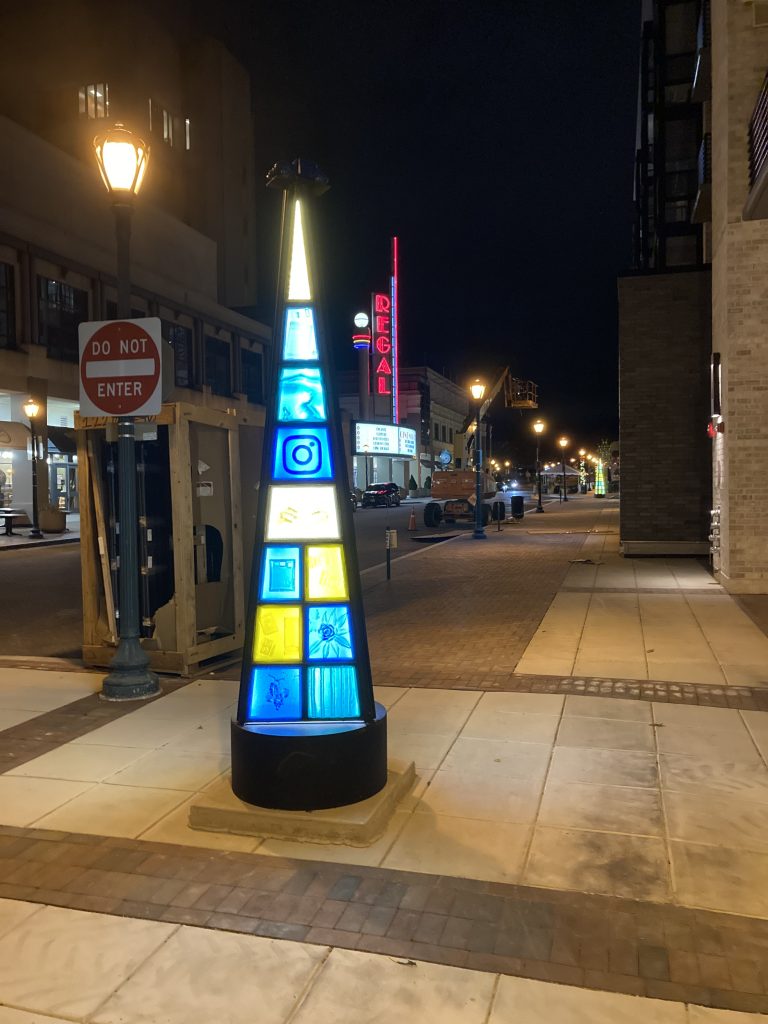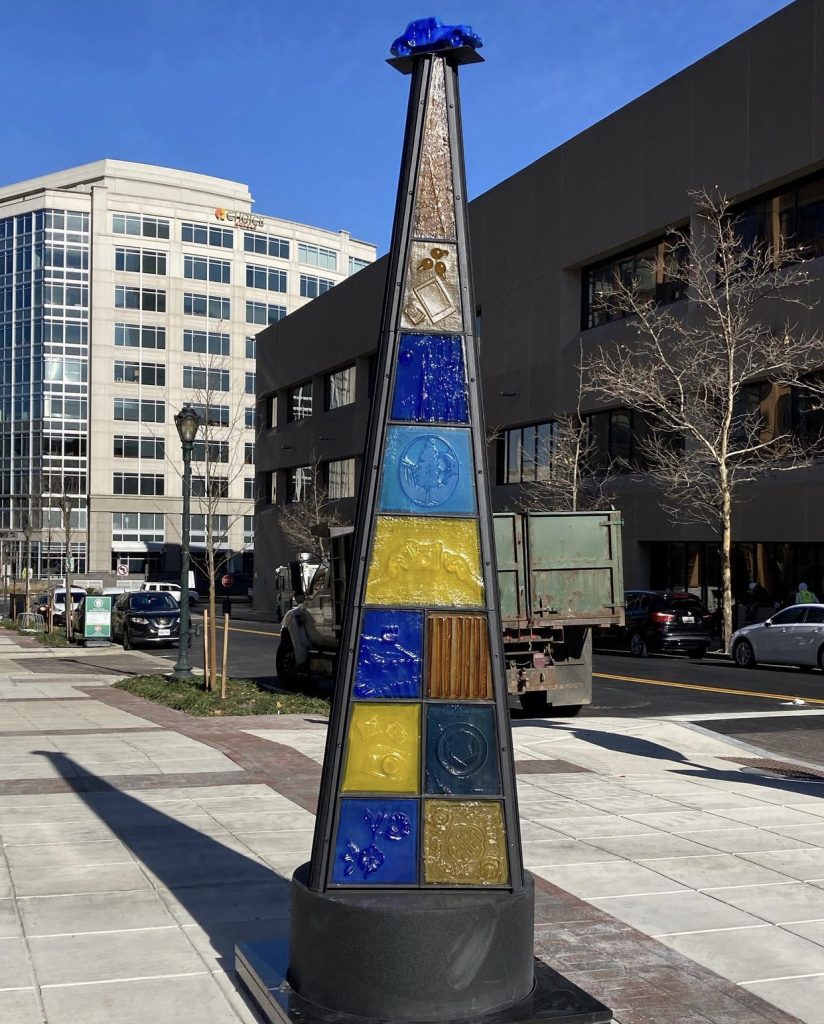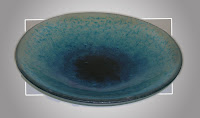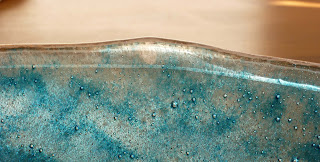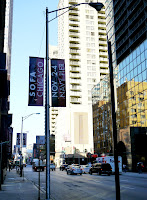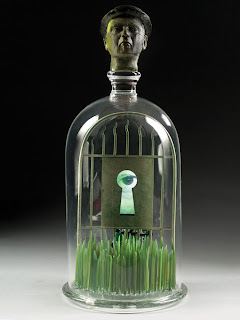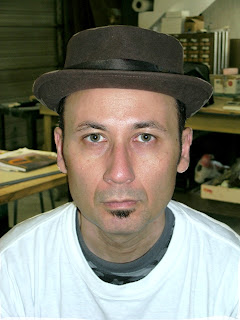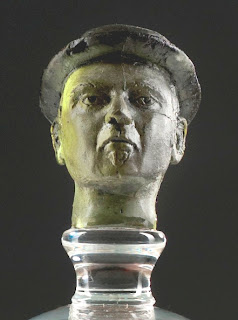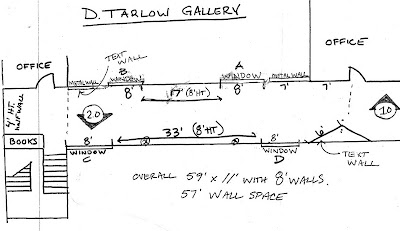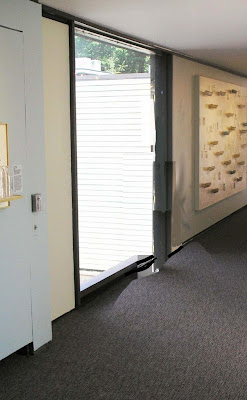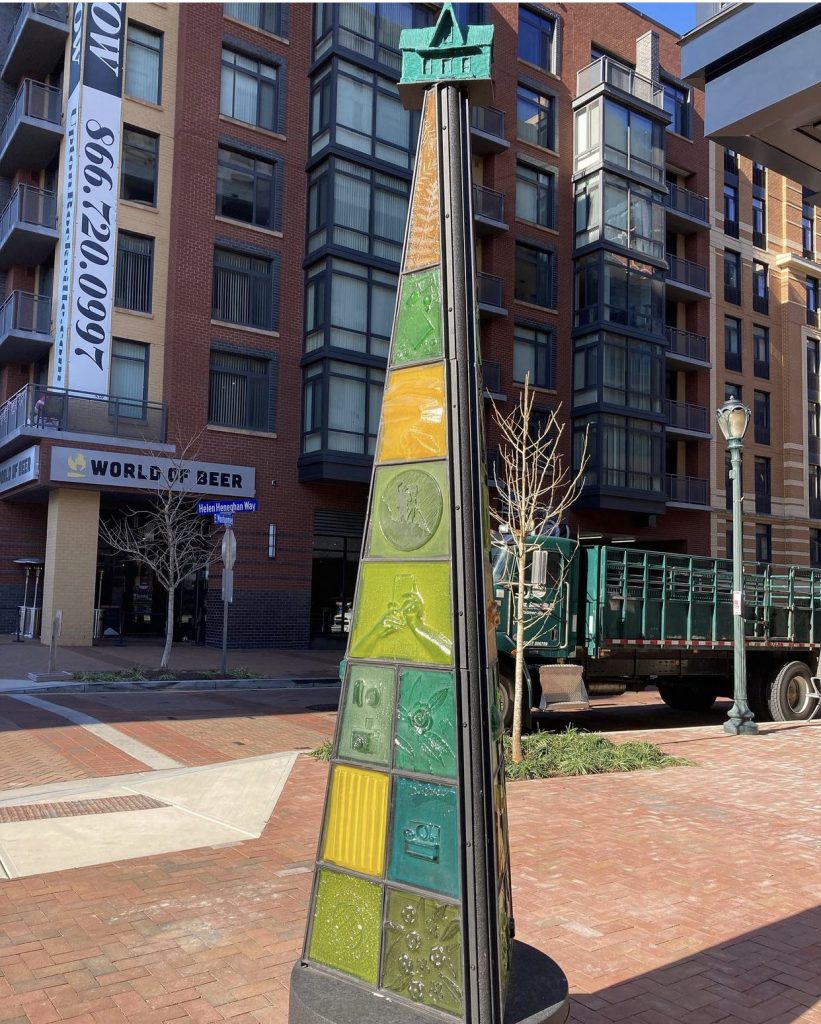
Washington Glass Studio was commissioned to make a new, two-part public art sculpture installation for the new mixed use residential development, Ansel, in Rockville, MD. Working with the project’s art consultant Artists Circle Fine Arts, the outlined goals were to enhance the location and the urban environment, as well as creating welcoming and colorful place markers that enlivens Rockville Town Center. The client – Duball, LLC – asked that the street placemaking artwork allow for a sense of fun and discovery.

The development was named “Ansel”, as spiritual nod to incredible American photographer Ansel Adams. Adams was considered a master of his craft and his experimentation with light gradations, degrees of exposure, and new techniques. Best known for his dramatic photographs of the American West, Adams achieved a popularity that few other photographers have known. Dedicated to wilderness preservation, he succeeded in changing the way Americans perceived their natural environment.
Creating a strong visual element for the streetscape – while maintaining clear pedestrian circulation – Washington Glass Studio focused on creating an internally illuminated vertical tower – approx 11′ high.
Named “Compositions In Light”, the sculpture is made of cast glass and powdercoated metal. The inset glass panels in the artwork incorporates artistic references to renowned photographer Ansel Adams – with artistic takes on his photos of still lifes, architecture, and landscapes; his love of nature, and sculptural interpretations of Adams main instrument – cameras.
The powder coated metal structure is arranged in triangular format to reference the classic photographers camera tripod. The shape also gives greater strength both structurally and in profile. The vertical structure supports the LED lighting and allows an even light to the glass wall panel opposite. The glass panels are inset into a removable grid section that is bolted to the structural frame. Each cast glass panel is set into silicone within metal angle surrounds. The metal base has a removable section to allow access to electrical source to tower.
Dimensional inset panels made of handmade cast glass presents tactile images of nature and objects that refer to Ansel Adams work and career. The varied nature of the artwork mounted in separate panels would invite investigation and exploration.
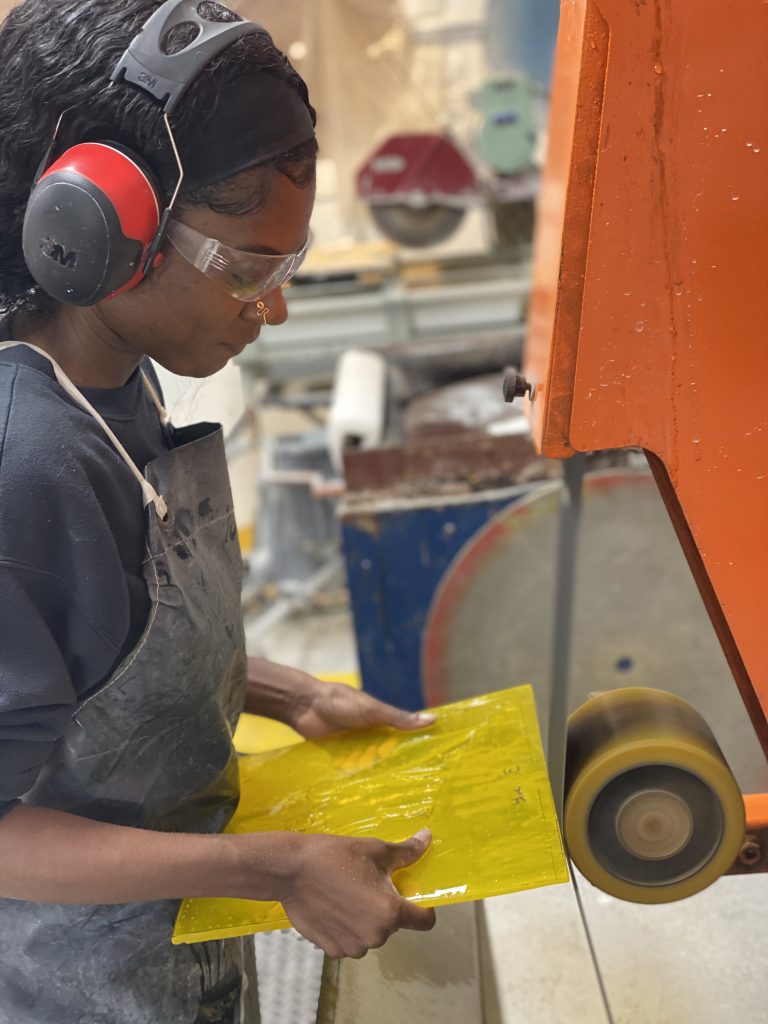
The gorgeous, illuminated tower is made up of colorful, tactile cast glass that defines each corner of the site. The inset glass panels are varied, but color coordinated with accent color panels to give a vibrancy to the design. The tapering form leads viewers eyes upward to a unique finial endcap, a cast sculpture that makes a fun, witty and distinctive statement. Dimensional inset panels made of handmade cast glass presents tactile images of nature and objects that refer to Ansel Adams work and career. The varied nature of the artwork mounted in separate panels would invite investigation and exploration.
Sparkling in the daytime and backlit with energy efficient LED, the glass artwork in “Compositions in Light” will always be a visible presence on the street. The metalwork and thickness of each glass panel make the artwork strong for a streetscape environment. In the history of American conservation, few have worked as long and as effectively to preserve wilderness and to articulate the “wilderness idea” as Ansel Adams. He spent decades in the battle to protect the environment. Helping reinforce the background of Ansel Adams as an environmental activist are the color directions for the artwork. Blues and greens are the colors most associated with nature and the environment.
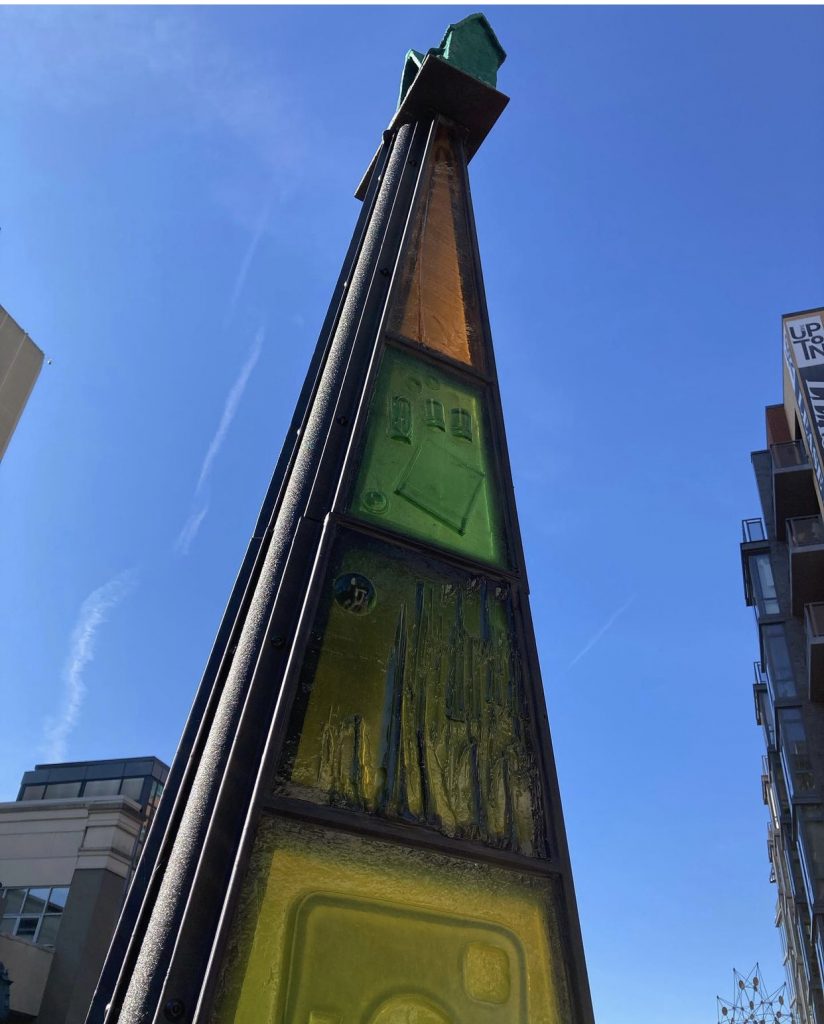
The interplay of sculpture, the colors & quality of cast glass and the prominent location makes this an integrated urban design that brings focus to the site. The freestanding nature of the installed artwork encourages visitors and residents to walk around the artwork and experience a dynamic sense of place. A sense of playful fun caps each sculpture and helps define the paired artworks. United by form, colorful towers reinforce their connection to the artwork of Ansel Adams with finials inspired by the master photographer’s artwork.
“Compositions In Light”
Project Address: 33 Monroe St, Rockville, MD 20850
Client: Duball, LLC
Maryland’s Rockville Town Center Phase II includes 400 apartment units; 250 market-rate luxury apartments and 150 senior affordable apartments to be owned and managed by the Housing Opportunities Commission.
Artwork Project Team: Erwin Timmers, Christina Helowicz, Tim Tate, Michael Janis, Shay Summers
Art Consultant: Artists Circle Fine Arts
